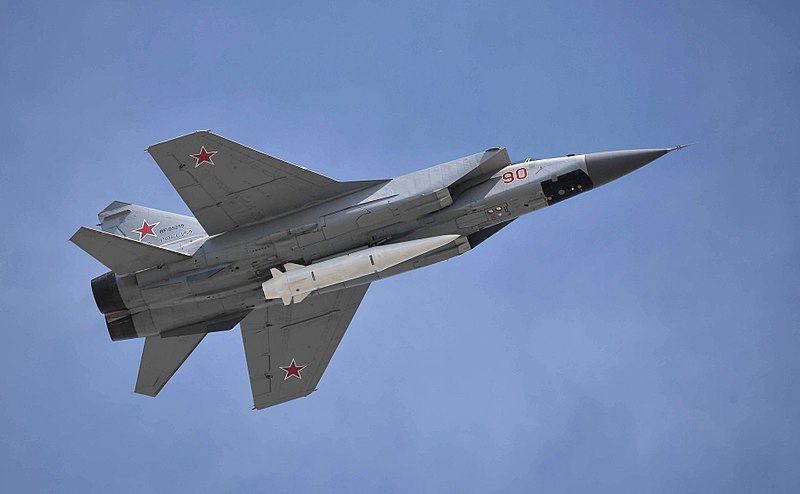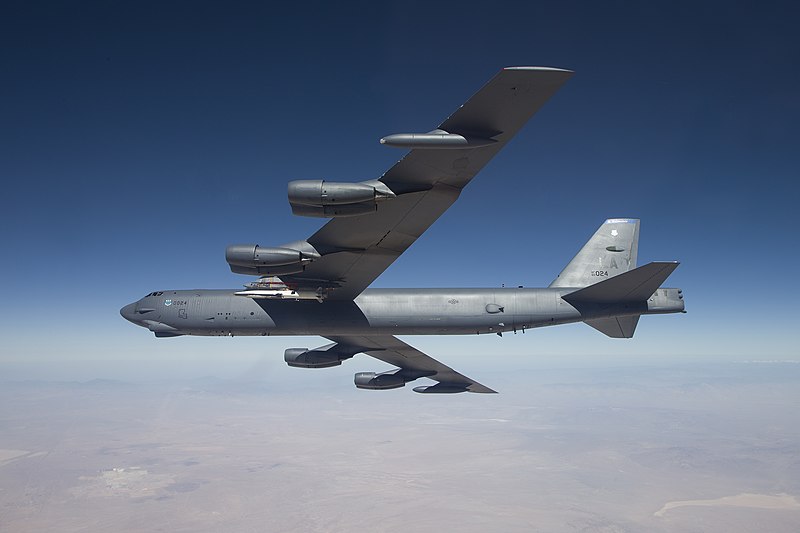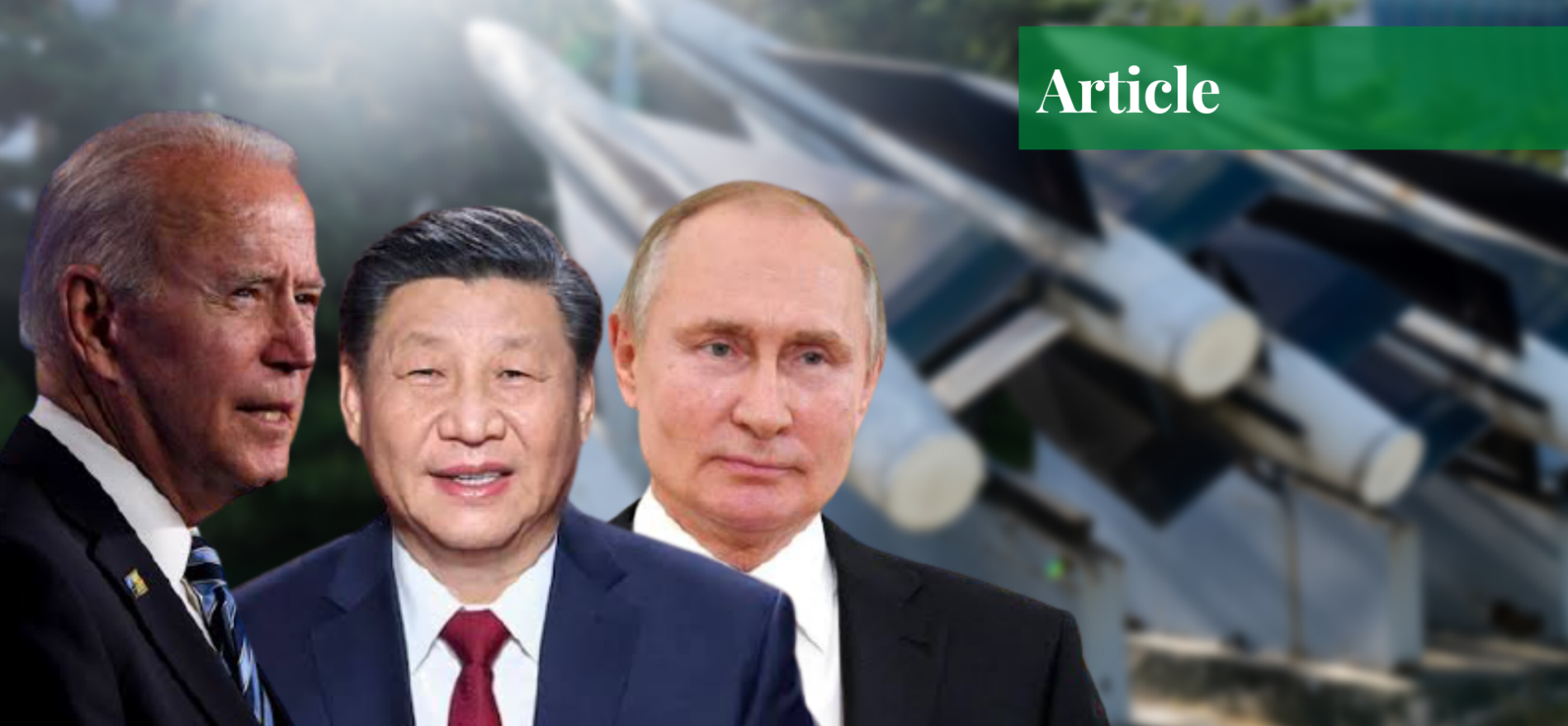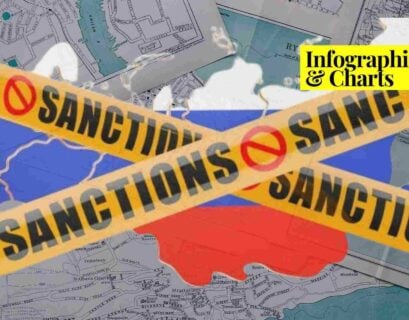Syed Alyaan Kazmi is currently pursuing his bachelor's degree in strategic and nuclear studies from the National Defence University, Islamabad. His areas of interest include the geopolitics of the Asia-Pacific region and South Asia.
Introduction
Despite disagreements, the majority of the experts from the US, China, Russia, and Europe agree that the advancements in military technology have the potential to exacerbate the complexity of deterrence and strategic stability, and intensifying the hypersonic arms race. Until the end of the Cold War, the entire construct of deterrence rested upon the presumption of survivability of credible nuclear forces to launch a counter nuclear strike, in retaliation to the first strike.
In recent years, advances in military technology—predominantly, the development of hypersonic weapons—have obscured the distinction between nuclear weapons and non-nuclear strategic weapons. Since hypersonic missiles can carry both nuclear and non-nuclear warheads at intercontinental ranges, their incredible speed and maneuverability enable them to incapacitate the adversary’s strategic forces like the nuclear command, control, and communication facilities without even crossing the nuclear threshold of the opponent.
Consequently, this warhead ambiguity might encourage a pre-emptive counterforce strike to limit the damage inflicted by the first strike. Hence, triggering an unstable hypersonic arms race leading to uncontrollable escalation, threatening the global strategic stability.
Hypersonic Missiles and Their Types
Hypersonic missiles, touted by many experts as the demolishers of anti-missile systems, travel at a speed faster than Mach 5 (about 5000-25000 km/hr) which makes them invulnerable to any missile defense system in the world. Presently, there are two main well-tested types of hypersonic missiles: hypersonic boost-glide vehicles (HGVs) and hypersonic cruise missiles (HCMs). Both have different working principles from traditional ballistic missiles.
Hypersonic Boost-glide Vehicles
HGVs are unpowered vehicles that glide at hypersonic speed in the upper atmosphere at an altitude above 50 km. Being equipped with propulsion systems, an HGV travels with greater maneuverability, having greater self-orientation and directional control.
The glide vehicle upon reaching about 100 km of altitude (depending upon the target location) separates from the booster and skims through the atmosphere by the momentum gained due to its aerodynamic shape. Moreover, an HGV follows an unpredicted non-ballistic trajectory, maneuvering at the hypersonic speed which makes it invulnerable to any missile defense system.
Hypersonic Cruise Missiles
The second type, the hypersonic cruise missile, uses a Supersonic Combustion Ramjet Engine (SCRAMJET engine) which generates supersonic airflow thrust. An HCM needs to gain a supersonic speed of about 4 to 5 Mach before the engine starts working and for this purpose, booster rockets are used.
Furthermore, land, aircraft, and ship-based launchers are used to launch an HCM, traveling at a low altitude of 12 to 30 miles, above the earth’s surface. Due to its high speed and unpredictable trajectory, an HCM poses a serious threat to most defense systems. Depending upon its speed, weight, and material stiffness, a hypersonic cruise missile possesses the capability to destroy any underground facility, solely through its kinetic energy, with high precision.
Hypersonic Technology and the US, China and Russia
Currently, the US, China, and Russia are the major countries actively pursuing research and development programs in the arena of hypersonic missile technology. Some other countries including France, India, and Australia are also pursuing hypersonic weapons for military use, however, they are still far behind the big three in this race.
Russia
Russia is the only country having hypersonic missiles developed and fully operationalized in its arsenal, while some are reaching operational status. At present, three main hypersonic missiles in the Russian arsenal pose serious threats to the US missile defenses. Firstly, the Avangard, an intercontinental ballistic missile (ICBM)-launched hypersonic glide vehicle that can travel at a velocity of more than 20 Mach—20 times faster than the speed of sound.
Avangard is fitted to carry both nuclear and conventional warheads capable of delivering a yield of 2 megatons. The defense minister of Russia, Sergei Shoigu, in a press release on December 27, 2019, confirmed the entry of Avangard HGV into the service of Russian rocket forces.
Another missile, the Kinzhal Kh47-M2, is an air-launched hypersonic ballistic missile that can travel at the velocity of 10 Mach, capable of carrying both nuclear and conventional warheads at the distant ranges of 2,000 km. A TU-22M3, a maritime strike fighter, and MIG-31K interceptor aircraft provide a reliable platform for its possible launch. Kinzhal, because of its maneuverability, is highly valuable to strike naval targets such as aircraft carriers. In December 2017, it entered the Russian rocket force service.

Lastly, Tsirkon 3M22 (Zircon) is a ship-launched hypersonic cruise missile that can fly at the speed of up to Mach 9 with a range of 1000 km. In July 2021, Russia successfully tested Zircon HCM from Admiral Gorshkov-class’s frigate on the Barents sea coast, which President Vladimir Putin described as a great event for Russia. Moreover, Russia is also pursuing a submarine version of Tsirkon HCM, which will further enable it to strike key US command and control centers with a slight warning.
The United States of America
For the United States, the development of hypersonic weapons remains the highest technical priority. At first, the US actively pursued the hypersonic missiles development program for its conventional use, however, the Pentagon had to drop the plans fearing their possible perception as nuclear warheads, triggering a nuclear response.
The Defense Advanced Research Projects Agency (DARPA) unsuccessfully tested two Hypersonic Test Vehicles (HTVs) in 2010 and 2011 but failed due to vehicle destruction. Nevertheless, the other US military services continued testing their hypersonic weapons. For instance, In 2013, the US Air Force tested the X-51A Waverider hypersonic glide vehicle reaching the speed of Mach 5.1. In June 2021, the US defense department announced a defense budget of $3.8 billion for the hypersonic weapons initiative in the fiscal year 2022.

China
Similarly, in China, hypersonic technology has become the focus of aeronautical research. To counter the US technological monopoly, China is also pursuing hypersonic weapons for military use. Since 2014, China has conducted several successful tests of DF-17 HGV, which can achieve a velocity of Mach 5-10 with a range of 1600-2400 km. Currently, China is also considering the development of hypersonic cruise missiles, which can be deployed by the mid of 2023. For Instance, DF-21D—an intermediate-range missile also known as a “carrier killer”—can penetrate the deck of the US aircraft carriers at a range of more than 1,500-2,600 km.
Implications for Strategic Stability
In the second nuclear age, the emerging competition in hypersonics poses grave challenges to strategic stability. Security professionals largely view strategic stability as the absence of incentives between nuclear powers to use nuclear weapons first to initiate a conflict. During the Cold War, strategic stability had two specific meanings: crisis stability and arms race stability.
Crisis stability is the situation between two nuclear states when both sides consider their nuclear forces as invulnerable, breaching any missile defense system an enemy may develop. Moreover, both sides assure that they are fully capable of massive retaliation if one side decides to launch the first nuclear strike.
In contrast, crisis instability, according to Thomas C. Schelling, is the fear of a pre-emptive counter-force strike by any side in a crisis. For crisis instability, two weapons are implicated— counter-force weapons and ballistic missile defense systems (BMDs). The former include ballistic missiles, MIRVs (multiple independently-targetable re-entry vehicles), and hypersonic missiles. In the 21st century, hypersonic missiles possess such prevailing capabilities having the potential to severely impact crisis stability between global nuclear powers.
Strategic Rationale and the Hypersonic Arms Race
The US withdrawal from the Anti-Ballistic Missile (ABM) Treaty in 2002 and the development of the Conventional Prompt Global Strike (CPGS) strategy gave incentive to Russia and China to develop hypersonic weapons. Russia’s intentions to develop hypersonic weapons are the product of a historical fear of the vulnerability of its strategic nuclear forces.
After the American withdrawal from the ABM treaty, Russia believed that the United States would develop conventional counter-force weapons to launch a first strike on Russia, and then, through advanced missile defenses, the US will circumvent the damage of Russian retaliatory strikes. Therefore, hypersonic missiles, armed with nuclear warheads, having rapid speed and maneuverability might assist in restoring the Russian logic of strategic stability.
For Russia, the strategic rationale behind hypersonic missile development was to evade the US missile defense systems to secure second-strike capability. In February 2019, the Trump administration announced the decision to suspend US obligations under the landmark 1987 Intermediate-range Nuclear Forces (INF) treaty. The treaty led to the elimination of cruise missiles and ground-launched ballistic missiles of a range of 500 – 5000 kilometers.
Russia views NATO enlargement as an existential threat to its national security. To address the advanced conventional capabilities of NATO, Russia is developing a land-based intermediate-range version of the Tsirkon-3M22 hypersonic cruise missile. Due to the unpredictable trajectory, high speed, and low altitude, the intermediate-range Zircon HCM can even circumvent the US Aegis-class system. Also, Russian theater-range hypersonic missiles as an essential part of the anti-access/area-denial strategy is a major threat to the forward-deployed US forces in the European theater.
Chinese experts argue that the US’ CPGS strategy can undermine the credibility of China’s nuclear deterrent. China maintains a “minimum credible deterrence” nuclear posture and has a no-first-use nuclear policy. Therefore, China believes that the US hypersonic weapons as a part of its CPGS tactic can decapitate its small strategic forces in a pre-emptive decapitation strike, ultimately weakening China’s counter-strike capability.
For that reason, China, like Russia, is also pursuing hypersonic weapons as a part of its anti-access/area-denial (A2AD) strategy to counter the US weapons. The US decision to deploy BMDs and advanced radar systems in the Asia-Pacific region produces incentives for China to shift to a policy of launch-on-warning and deploy intermediate-range hypersonic missiles as a part of the A2AD strategy.
Implications for the Decision-making Process
The utility of hypersonic weapons in a crisis involves many implications for the crisis stability because the hypersonic weapons possess some exceptional features which enable them to create security dilemmas between the hostile nuclear states. The hypersonic speed of these missiles severely impacts the decision-making timelines.
Decision-makers, after a hypersonic weapon has been detected, would have to act in a very short time after receiving initial intel from detection radars. The whole chain of command would be under greater pressure under the tainted environment of compressed timelines. For instance, a hypersonic missile like Avangard, capable of carrying both conventional and nuclear warheads, approaching at the speed of more than 25 Mach, would give little time to US decision-makers to detect and analyze the intelligence received from the radars.
Consequently, the warhead ambiguity could encourage a nuclear response to a conventional strike due to inefficient decision-making in a degraded decision-making environment, triggering a nuclear crisis. Similarly, target ambiguity is another challenge for the decision-makers because the hypersonic weapons can maneuver even before the point of contact with the target. It makes it impossible for the radars to track the trajectory of an incoming hypersonic missile.
As a consequence, decision-makers will be facing a “use-it or lose-it dilemma” because a delay of a minute in decision-making can result in the decapitation of the entire command and control center. Hence, the increased degree of unpredictability could result in miscalculated pre-emptive nuclear response which will ultimately start a nuclear conflict.
Nevertheless, this inefficient decision-making will have other serious implications on the organization of strategic forces. For instance, regional commanders of strategic forces might be given full authority to make independent decisions in a state of crisis. This decentralization of command and control might result in miscalculated nuclear launches resulting in uncontrollable nuclear escalation.
Arms Race Instability
The advent of hypersonic weapons is most likely to be destabilizing for the arms race behavior of nuclear states. The contemporary world is entering into an age of great uncertainty because the advent of hypersonic weapons is further intensifying the offense-defense dynamic of the arms race. For instance, in this arms race, China and Russia are developing new offensive strategic hypersonic missiles to evade the US missile defense systems.
At the same time, the US is investing heavily in the means to counter this new hypersonic threat. For this purpose, the US has awarded a contract to Northrop Grumman and L3Harris to develop prototypes of hypersonic and ballistic tracking space sensors (HBTSS). To avoid this new hypersonic arms race there is a need to negotiate new multilateral agreements limiting the development and proliferation of hypersonic weapons. However, major world powers, unfortunately, are less likely to negotiate any new treaty limiting the use of hypersonic weapons.
Conclusion
In this age of great power competition and a hypersonic arms race between the US, China, and Russia, it seems impossible that any treaty or an agreement could limit the development of these disruptive technologies. However, the establishment of a mechanism to prevent conflicts and ensure confidence-building measures to limit the incentives for the first use of hypersonic weapons could be the first step toward negotiating a new multilateral agreement between the world powers and maintaining global strategic stability.
If you want to submit your articles and/or research papers, please check the Submissions page.
The views and opinions expressed in this article/paper are the author’s own and do not necessarily reflect the editorial position of Paradigm Shift.



















